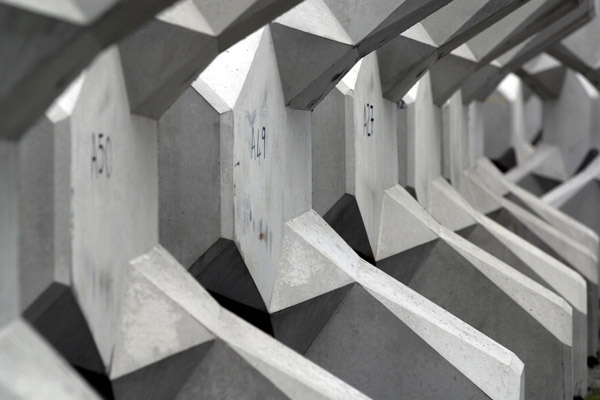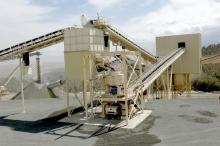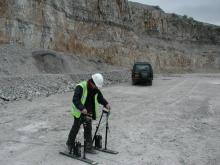
Advances in precast concrete element design is helping to improve environmental performance, deliver complex designs and speed up work on site
Concrete used to be thought of as a dull, grey and utilitarian construction material, but the latest precast techniques are helping to change that perception. Today the dramatic forms of new buildings and structures across Europe are being delivered quickly and easily thanks to precast concrete.
According to the European federation for the sector
"Globally speaking, the last few years have been good for the precast concrete market," said BIBM general secretary Alessio Rimoldi. "The rising demand is partly due to the growth in the construction market in Europe but there are other factors involved. Precast concrete in Europe has three main markets - housing, commercial or municipal buildings and infrastructure - and all are growing well.
"The rate of immigration into Western Europe is stimulating the need for cost effective housing, while increasing investment in new hospitals and schools is influencing the buildings sector. Infrastructure development is dependent on both national and European investment, which is being boosted by both private-public partnerships and EU funded development in new member states.
"The prospects for all three markets look good, although growth will not be at the same rate as seen in the last few years, but we expect the strongest growth to come from the commercial sector over the next 12 to 18 months."
Benefits
The growing demand is not just down to the gains in the European construction market, but is also due to growing market share thanks to developments within precast technology itself and understanding of the environmental credentials.
"Construction clients are beginning to understand that while precast concrete is a high energy consumption product during the production phase, over the life cycle of a structure, it is not significant," said Rimoldi. "In fact, it is now becoming more widely recognised that precast concrete has a positive impact on lowering the energy consumption of the building thanks to its thermal mass properties and can also provide low acoustic transfer." In addition, the integration of other services and ancillaries into precast concrete panels is further helping to boost the sector. "It is not uncommon now to integrate insulation, service ducts or the façade into precast units," explained Rimoldi.
Two of the latest additions to this trend are manhole shafts and covers with built in ladders to improve safety, and pipes with built in ducts for carrying cables.
"This kind of innovation is helping to simplify and speed up construction on site," said Rimoldi. "It is also helping the precast industry to add real value to the overall construction process and improve the finished structure."
Off site
Use of off site construction techniques is increasing in some European markets, particularly the Nordic countries, as it can reduce on site construction time and also improve precision. The use of off site construction techniques to build residential units to the same repeating pattern can help to lower construction costs further with precast elements manufactured in volume rather than on an individual basis.
The latest technology in the precast sector, in the form of innovative new additives, is also helping to boost this trend by making it easier to precast complex units. Nonetheless, more conventional on site construction methods are also important to the European precast industry with the production of concrete blocks. "Some markets still prefer to carry out the whole build on site and are likely to stay that way," said Rimoldi. "In Southern Europe the split between off site and on site is probably an equal split and likely to remain stable. Other markets, such as Eastern Europe, favour on site techniques."
Local industry
According to BIBM's figures, the European precast concrete industry has a turnover of around €40billion. "We estimate that the sector is served by 8500 plants and employs approximately 250,000 people," said Rimoldi. "The average size of precast concrete plant in Europe is relatively small - this is mainly because of the cost of transporting finished elements to site." The local focus on supply of the end products from the precast sector also applies to the use of materials and, according to Rimoldi, the industry is very good at making best use of the materials available locally. He also points out that most precast plants have been actively recycling material for years with elements that don't meet the required standard and excess material being crushed for re-use in the next batch of products. "Unlike the recycling of concrete demolition waste, the concrete that has not even left the plant does not carry the same risk of contamination, so the reuse does not impact on the quality," said Rimoldi.
Nonetheless, the industry is changing. "Like the rest of the aggregates business and construction industry, there has been significant consolidation of the precast concrete sector in the last few years. But because of the local nature of the industry, it has not significantly changed the structure of the sector." One of the drivers to this consolidation is the cost of materials and the end price of the precast elements. "In recent years there has been stiff competition for materials and the bigger companies are in a much better position to negotiate on price and deliver the end product at a lower cost," said Rimoldi. "In the future I think there will be more competition on price." The other change that the consolidation in the market has brought is additional investment, both in modernisation of precast plants and training of employees.
"The industry has had a real problem with recruiting qualified staff in recent years, but training programmes are now being developed to improve skills and train up new staff," said Rimoldi.
The state of the art plants are helping to deliver the complex elements that the construction industry is now demanding, while maintaining quality and meeting growing standardisation in the sector. "Although precast concrete is very much a local product, much of it comes under the CE marking of construction products," explained Rimoldi.
What is clear is that the trend towards innovation and focus on quality is set to continue, which will help to ensure that the growth the industry has seen in recent years will continue.










